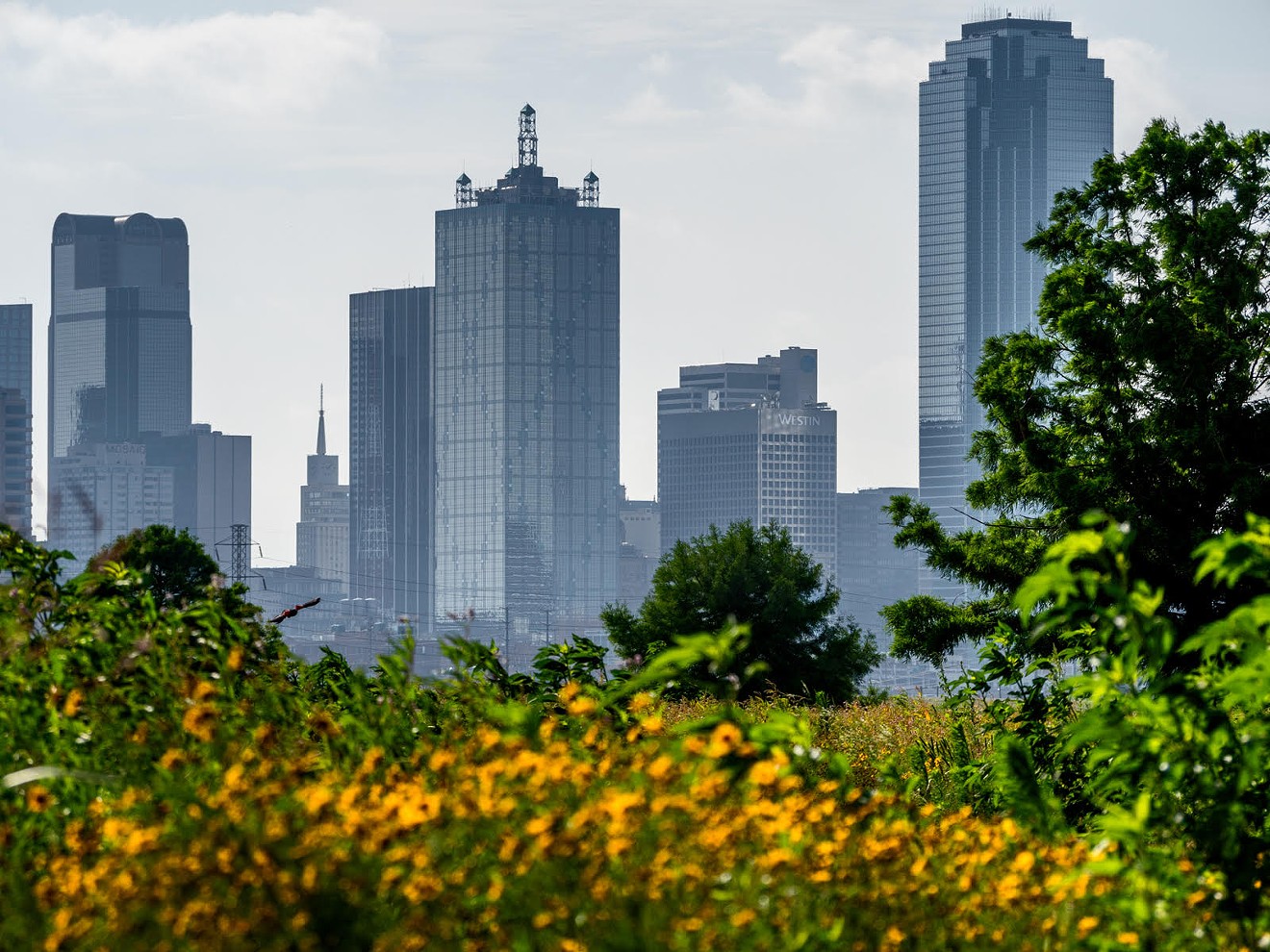A study by UT's Lyndon B. Johnson School of Public Affairs gave Dallas a perfect score for the work City Hall has done to welcome immigrants but ranked the city low for job opportunities and "livability" for newcomers, which captures homeownership rates, rent burden, overcrowding and more.
Students from the school and their professor Ruth Wasem came to the city to get first-hand accounts from different immigrant populations about what it’s like for them to live here.
"Relative to its peers Dallas ranks in the lowest quartile for its Job Opportunities score, which captures labor force participation rate, employment rate, and shares of people in high prestige occupations, part-time work, and self-employed," the study says. "One reason for this low score is the large number of Dallas foreign-born individuals working low-skill jobs, despite an overall strong labor force participation rate."
The city also ranked low in the disparities between how overcrowded living arrangements are for the foreign-born versus native-born populations.
About a quarter of the city's population are immigrants, and 32% of the labor force in the metro area are immigrants. In a statement about the study, City Manager T.C. Broadnax said that immigrant inclusion plays a significant role in creating a resilient city. "This rapid demographic change is critical to our city's economic, social and cultural fabric," Broadnax said.
Those who participated were asked about education, work, proximity to other U.S. citizens and how accepted they felt in Dallas. Aaron Escajeda, one of the students assisting in conducting the study, said that while Dallas scored low in some areas, most immigrants who participated said they’ve had a comfortable, positive experience here and want to remain.
Over the course of about nine months, the researchers dove deep into three distinct tiers of Dallas’ immigrant population.
Tier 1 looked into how Dallas compares with other major cities on immigrant inclusion. The second tier aimed to discern the residential patterns of immigrants and the demographic and socioeconomic features of these neighborhoods. In Tier 3, the researchers gathered the first-hand experience from Dallas’ immigrants.
Dallas mainly received its high score in government leadership for creating the Office of Welcoming Communities and Immigrant Affairs, for bringing 85 community leaders together on a task force to provide recommendations to City Council and for developing a welcoming plan to help integrate migrants and refugees.
The researchers say Dallas should create policies to foster economic development in immigrant populations and support programs that enhance education, neighborhood livability and access to legal, health and services in these communities.
More specifically, the researchers recommend Dallas strengthen partnerships in the community, improve workforce development with language and skills training and encourage construction and preservation of affordable housing.
“Notably, our policy recommendations would uplift both foreign-born and native-born residents of Dallas through promoting city services and programs, increasing access to affordable housing and fostering wage growth,” said Wasem, a domestic policy expert and professor of policy practice at the LBJ School.
The city’s Welcoming Communities and Immigrant Affairs office partnered with the school earlier this year to conduct a study to find roadblocks to community inclusion.
Three years ago, Dallas became one of two dozen cities in the country to establish welcoming communities as part of its immigration initiatives. They were meant to ensure long-time residents and recent immigrants could participate in making their communities better.
Since then, Liz Cedillo-Pereira, the city’s chief of equity and inclusion, said Dallas has made great strides toward community inclusion. It’s going to be a heavy lift to do what the report recommends, she said, but it’s consistent with the goals they’ve already set for themselves.
“There are still more improvements to be made and this formidable report underscores the need for advancing economic opportunity, housing affordability and labor force training for immigrants to harness the full potential of all Dallas residents,” Cedillo-Pereira said.
[
{
"name": "Air - MediumRectangle - Inline Content - Mobile Display Size",
"component": "18855504",
"insertPoint": "2",
"requiredCountToDisplay": "2"
},{
"name": "Editor Picks",
"component": "17105533",
"insertPoint": "4",
"requiredCountToDisplay": "1"
},{
"name": "Inline Links",
"component": "18349797",
"insertPoint": "8th",
"startingPoint": 8,
"requiredCountToDisplay": "7",
"maxInsertions": 25
},{
"name": "Air - MediumRectangle - Combo - Inline Content",
"component": "17105532",
"insertPoint": "8th",
"startingPoint": 8,
"requiredCountToDisplay": "7",
"maxInsertions": 25
},{
"name": "Inline Links",
"component": "18349797",
"insertPoint": "8th",
"startingPoint": 12,
"requiredCountToDisplay": "11",
"maxInsertions": 25
},{
"name": "Air - Leaderboard Tower - Combo - Inline Content",
"component": "17105535",
"insertPoint": "8th",
"startingPoint": 12,
"requiredCountToDisplay": "11",
"maxInsertions": 25
}
]












